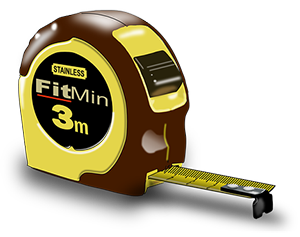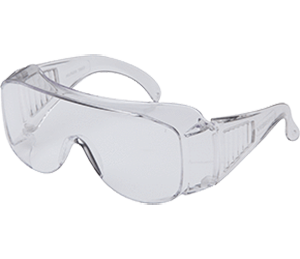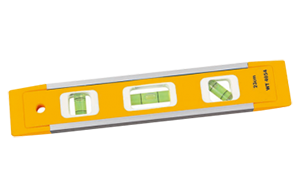Setting Up A Tinkering Space for Your Classroom
Create a purposeful and engaging tinkering space in your early years classroom with this practical guide. Learn what a tinkering space is, how to set one up, and why it supports STEM, problem-solving, and creativity in young children.
Have you ever had a student pull apart the tape dispenser or invent a contraption out of sticky notes and paper clips, but you haven’t had a dedicated space for them to explore these big ideas?
That’s where a tinkering space comes in.
Tinkering has become one of our favourite investigation areas. I’ve seen children who struggle with traditional pencil-and-paper tasks come alive when given a pair of screwdrivers and an old toaster (cord removed of course!).
Their eyes light up. Their confidence grows.
And the best part? They're learning and I mean - really learning - without even realising it.
A tinkering space is a dedicated space in your classroom where young children can explore new things, try out different ideas, and experiment with real tools and materials.
It offers an open-ended, child-led way to foster creativity, build resilience, and develop new skills like problem-solving, collaboration, and fine motor control.
It's not about right answers. It’s all about trying, testing and tinkering.
In this blog post, I’ll show you
what a tinkering space is
how I’ve set one up in my own classroom
and how it connects to STEM education and the Walker Learning Approach.
I’ll share my best tips, the tools and materials I use, and how I keep it organised and inviting. By the end, you’ll have a clear plan to create your own tinker space. You just need a little bit of space, the right tools, and a whole lot of curiosity.
What is Tinkering?
Tinkering is the first step in the Experiential Learning continuum.
Experiential Learning is the process of learning through experience but can be more specifically defined as "learning through reflection on doing". ... Beginning in the 1970s, David A. Kolb helped to develop the modern theory of experiential learning, drawing heavily on the work of John Dewey, Kurt Lewin, and Jean Piaget.
In the early years classroom, we refer to this dedicated learning area as a tinkering space.
It might look like a mini workshop at first glance - but it’s so much more than that! It’s a place where young children can follow their curiosity, investigate how objects work, and test out different ideas using real tools and materials. This kind of space encourages persistence, flexible thinking, and collaborative problem-solving.
The Walker Learning Approach defines a tinkering space as an area where children “can pull apart, undo, unlock and unwind – old keys and locks, radios, telephones, things to pull apart, the list is never-ending.” They recommend including safety goggles and supporting children to develop skills such as oral language, problem-solving, fine motor development, designing, perseverance and lateral thinking. (Source: Early Childhood Matters by Shona Bass and Kathy Walker).
This aligns beautifully with what we see in practice.
When children have access to the right tools in a safe, well-organised environment, they dive headfirst into learning without hesitation.
In many ways, a tinkering space shares features with a tinker room, a maker space, or a STEM station - but what makes it unique is how it’s embedded into the rhythm of a play-based, child-led classroom.
It’s not a one-off lesson. It’s an ongoing invitation for children to explore, invent, and learn through doing.
Tinkering is a hands-on experience where children are given time to explore and invent.
It involves experimenting with authentic tools to help a child understand how things work.
Tinkering definitely supports learning through doing and teaches children valuable lessons by helping them develop fine motor skills, problem solving abilities and peer relationships.
Through Tinkering, the children will be engaged in open-ended experiences that allow them to question, design, collaborate, and construct knowledge as they go. Tinkering promotes deep engagement in scientific and engineering practices. It also gives the learner an opportunity to take part in multiple cycles of design and discovery.
Why You Need Tinkering in Your Classroom
When children tinker, they will develop a trial and error-based process where persistence and resourcefulness are developed and rewarded. Their critical and creative thinking are nurtured through their explorations in the Tinkering space.
Tinkering activities also build peer relationships in the children. The social environment supports teamwork and collaboration as the children observe, inquire and innovate together.
Student-driven purposeful problem-solving skills are supported through Tinkering. These skills benefit children by developing their confidence and stimulating their creativity.
“The long-term benefits of tinkering time are remarkable,” said Katy Scott, Education Technology Specialist at the Monterey Bay Aquarium in California. “In many ways, tinkering resembles inquiry-based learning, cooperative learning, and project-based learning, all of which have been proven to have long-term positive effects on student achievement and success.”
Several studies in the science of learning have shown that hands-on experimentation through trial and error, helps children conceptualise ideas and enhances their understanding on how things work in much greater depth. By providing problem solving practice at a Tinkering space during investigation time, children are equipped with lifelong skills that can be used in all areas of learning.
Tinkering also naturally supports STEM exploration in the early years. As children interact with gears, screws, wires, and switches, they’re developing foundational engineering and scientific thinking. All without a worksheet in sight!
It’s authentic and deeply engaging learning.
The Walker Learning Approach recognises tinkering as an ideal fit for child-led, hands-on learning. According to Early Childhood Matters, tinkering promotes “oral language, and conversational skills, problem solving, fine motor skills, thinking, designing, perseverance and lateral thinking.”
With Tinkering, it’s not just about what children make. It’s just as much about the process – the thinking and experimenting that gets them there.
In my classroom, I’ve seen tinkering unlock a child’s creativity in ways I never expected.
One child made a “spider robot” using paper towel tubes, alligator clips, and googly eyes. Another spent days trying to reconnect a set of gears from an old fan. And one quiet little boy simply held up a screw he’d removed and whispered, “I did it.” That small moment? It was huge.
These moments of perseverance, design thinking, and discovery are exactly why a tinkering space belongs in any play-based classroom.
What You Need in a Classroom Tinkering Area
First you will need to dedicate a space with a strong worktable or bench. To make this space conducive to social interactions, I recommend a table that seats 2 children comfortably. Authentic tools are very important. We started our Tinkering space with two sets of safety glasses, a set of screwdrivers, a tape measure and a couple of small piers. You will need to think about how to store the tools so that the area stays tidy and workable. We have a small tray for the pliers and tape measure. The screwdrivers are in a pencil container and the safety glasses stay on the worktable.
We have clipboards and pencils at every investigation area. This encourages the children to record their learning and allows them to practice their literacy skills in real-life situations. For that reason, we also include relevant texts and environmental print for the children to read and research.
This is also a great place to add vocabulary cards, labels, and posters to help build language and understanding. I’ve found that having a few simple signs like “Under Construction” or “Safety First”, adds purpose to the space and helps spark authentic conversations.
You can download a sample of my Tinkering Display Pack here in my Free Resource Library.
It contains an information poster for parents and educators, a couple of safety glasses signs and 2 Tinkering word clouds.
These will help to inform others about the benefits of Tinkering and will also get you started with some environmental print.
Of course, you will also need to provide something for the children to pull apart or deconstruct. Anything that requires power OR has a movement mechanism are ideal Tinkering items.
SAFETY FIRST: If you are using an electrical item, remove the cord before adding it to the area.
Old and broken laptops, computers, sewing machines, video & CD players, phones, fans, clocks, microwaves, toasters and other kitchen appliances, heaters, fans, bikes, push & pull toys, battery operated toys… the list of items is endless!
At times, we have offered small construction sets like meccano or a variety of nuts & bolts, chains, locks with keys, and metal plates & brackets etc.
We even add in bits and pieces like snap circuits, alligator clips, nuts and bolts, keys and locks, and pipe cleaners for added creativity. These materials invite children to try a different way of thinking, connecting, and experimenting. The more variety in materials, the more diverse the learning experiences.
We always keep the bits and pieces and all the parts the children remove. They are stored in small tub at the Tinkering table. Sometimes the children will try to re-assemble a piece and sometimes children source parts from the tub for their box constructions and projects at the Maker’s Space/ Art Area. These creative projects make great displays in the Tinkering area too!
It doesn’t take a fancy art studio or expensive tools to get started. Just a little bit of space, the right tool for the job, and some curiosity. Even popsicle sticks, paper towel tubes and googly eyes can become part of a brilliant new project in the hands of a determined young tinkerer.
Make Your Tinkering Space Inviting
It’s very important for me to work in a visually appealing and peaceful environment and I know that most children appreciate this as well. A well designed, beautiful space draws a child in and often invites others that may not have otherwise visited that space.
I have found the children are much more respectful of the materials if they are authentic and have been placed in an area with care and intention. Offering real-life tools implies you trust the children to use them correctly and children will usually live up to your expectations.
Having an organised area helps keep the children working with intention and on-task. It also ensures a smooth pack up. I do love a tidy classroom. I think we all like to work in a tidy, inviting and well organised space.
Don’t worry - your tinkering space doesn’t have to be large. It just needs to be purposeful. A small, dedicated space in a corner of your classroom can quickly become the most loved area of the day.
You might be surprised who it attracts. Some of my older children who usually rush to the block corner have started settling into this quieter space, deeply focused with a pair of safety glasses and a screwdriver in hand.
The way you set up your tinkering area communicates to children that what they’re doing here matters. A beautiful creative space signals respect, value, and inspiration.
Think about displaying children’s inventions, including recycled parts in glass jars, or adding clipboards with sketches from their “invention planning”. These small touches go a long way in creating an environment that’s not just functional - but magical.
Bring Your Tinkering Space to Life with My Display Pack
I have designed some beautiful printables to help you setup an inviting and educational Tinkering space in your classroom.
My Tinkering Display Pack includes:
a large Tinkering banner sign
information poster for parents and educators
28 vocab cards illustrated with real life images
safety glasses signs
under construction signs
Tinkering word clouds
2 illustrated Tinkering quotes
12 Tinkering prompt cards
Tinkering word clouds
2 illustrated Tinkering quotes
12 Tinkering prompt cards
These printables are designed to make your tinkering space feel purposeful, engaging, and easy to manage. These resources will save you time and bring visual clarity to your setup.
You don’t need a full art studio or loads of storage. Just a dedicated space, a few key tools, and some well-placed signs can make all the difference.
When everything is labelled and intentional, children know what’s expected and they take more responsibility for using the space respectfully.
Are you ready to give your children a hands-on experience where they can explore and invent?
Foster their fine motor skills as they manipulate authentic tools. Give them the opportunity to develop a trial and error-based process where persistence and resourcefulness are rewarded. Critical and creative thinking will be nurtured through their explorations in your tinkering space too.
These printables will help your children engage in open-ended experiences that allow them to question, design, collaborate, and construct knowledge as they go. Tinkering promotes deep engagement in scientific and engineering practices. It gives the learner an opportunity to take part in multiple cycles of design and discovery.
By using these printables to help you set up a tinkering space, your students will be equipped with lifelong skills that can be transferred and used in all areas of learning.
👉 Click here to download your Industrial-Themed Tinkering Display Pack and get started today!





















